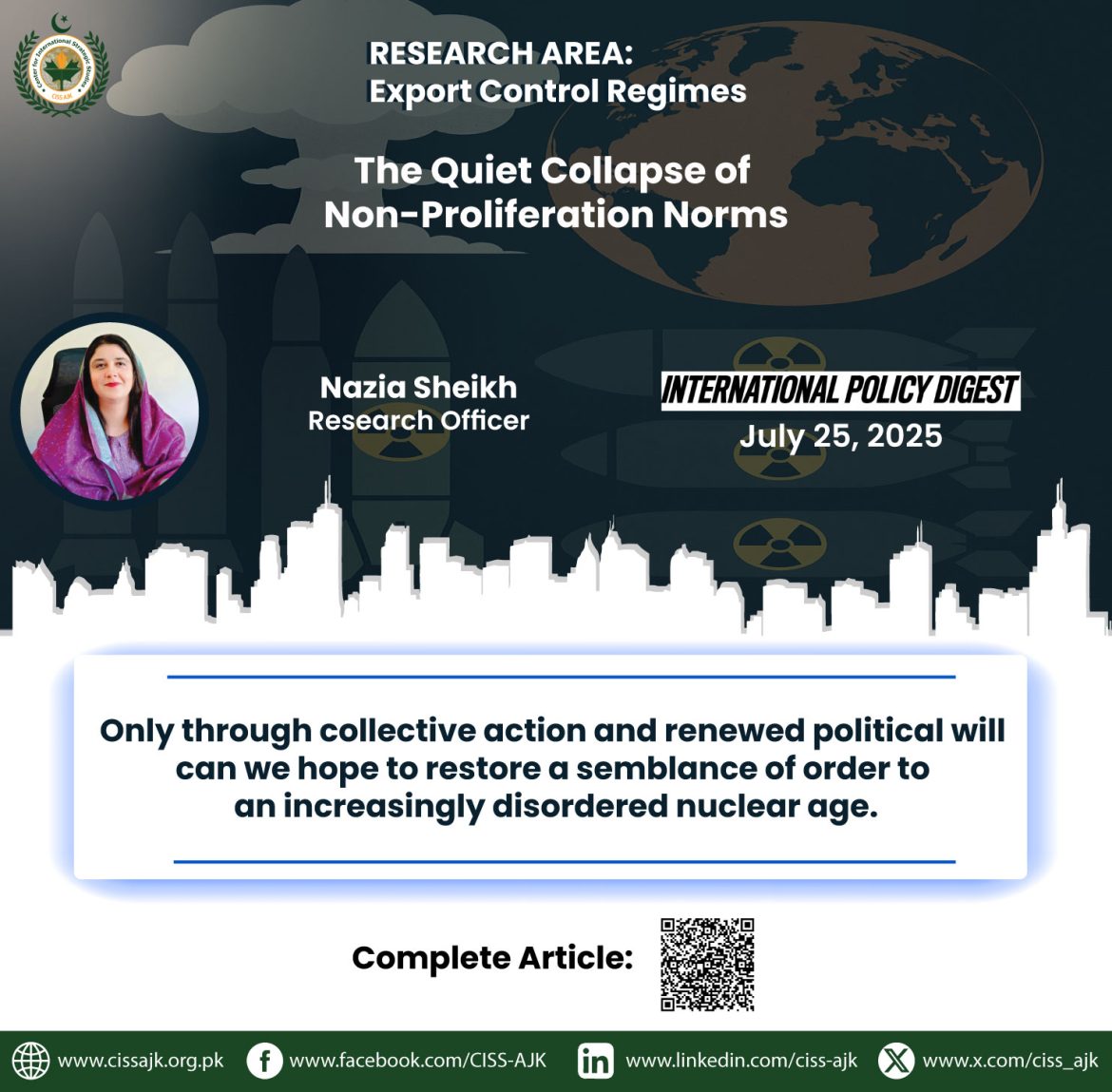With nuclear weapons being a bit of a joykill, countries are trying to normalize war.
In the wake of the latest escalations between Pakistan and India and Israel’s preemptive strike on Iranian nuclear facilities, the global security landscape has entered a new phase—one where calibrated, conventional military operations are increasingly tolerated below the threshold of full-scale war. What was once restrained by the threat of nuclear retaliation is now a contested gray zone.
While nuclear deterrence continues to prevent all-out war, it no longer guarantees the absence of conflict. According to the Stockholm International Peace Research Institute’s (SIPRI) Yearbook 2025, all nine nuclear-armed states are modernizing and expanding their arsenals. For the first time since the end of the Cold War, the number of warheads globally has increased—not decreased.
The SIPRI report offers a sobering snapshot of this new nuclear normal. The United States, Russia, the United Kingdom, France, China, India, Pakistan, North Korea, and Israel are each ramping up their military capabilities—not only conventional forces but also nuclear systems. This arms race is being driven not just by national security calculations but also by the integration of advanced technologies into strategic military planning. In short, deterrence is being redefined.
The magnitude of these developments is stark. Of the 12,241 nuclear warheads currently in existence, more than three-quarters are in the military stockpiles of the U.S. and Russia. Some 2,100 warheads are on high operational alert, with 3,912 already deployed on missiles and aircraft. The remainder sits in reserve storage—but not idle. Both superpowers are actively upgrading warheads, reactivating missile silos, and deploying new delivery systems, despite facing technical and financial hurdles.
What makes this moment especially precarious is the imminent expiration of the New START treaty—the last remaining bilateral arms control agreement between Washington and Moscow—set to lapse in early 2026. No replacement treaty is under negotiation. And despite U.S. efforts to rope China into a new trilateral framework, there is little indication that Beijing is interested in capping its nuclear buildup. As arms control agreements falter, analysts warn of a surge in vertical proliferation, where established nuclear powers pursue modernization unchecked. This opens the door for regional actors to expand their arsenals with even less oversight.
But the current instability isn’t limited to strategic balances among major powers. The recent U.S.-Israel strike on Iran’s nuclear facilities—sites that were under International Atomic Energy Agency (IAEA) safeguards—has deeply damaged global confidence in non-proliferation norms. Not only did the IAEA fail to condemn the attack, but it also appeared impotent to stop or even meaningfully respond to the breach. Its credibility as a neutral observer has been seriously eroded. If IAEA-inspected facilities can still be targeted without consequence, then what incentive remains for countries to open their programs to international oversight?
This erosion of trust poses a significant challenge to the Nuclear Non-Proliferation Treaty (NPT) regime. Iran, a signatory to the NPT, had allowed inspections of its nuclear program under the JCPOA framework. The military strike on its facilities has upended that arrangement, jeopardizing prospects for any future agreement and damaging efforts to establish a nuclear weapons-free zone in the Middle East. It has also weakened broader multilateral initiatives such as the Fissile Material Cut-Off Treaty and the Comprehensive Nuclear-Test-Ban Treaty.
What’s even more concerning is the precedent set by Washington’s direct involvement. For the first time, a sitting U.S. president openly authorized a military strike on another nation’s nuclear program. This action, taken despite the U.S. intelligence community’s assessment that Iran was not actively developing nuclear weapons, sends a chilling message to non-nuclear states: without a nuclear deterrent, you’re vulnerable. Unsurprisingly, Iran’s parliament has since voted to suspend cooperation with the IAEA, further undermining non-proliferation norms.
In this shifting environment, the rationale for acquiring nuclear weapons becomes more compelling—not less. The logic is simple: when diplomacy fails and military might becomes the first recourse, nuclear deterrence appears to be the only safeguard against existential threats. If the international community does not urgently reinforce norms against the use of force in such contexts, the proliferation landscape will become increasingly unstable.
Meanwhile, nuclear-armed powers are pressing ahead with arsenal expansions, deepening the divide between the haves and have-nots. This not only raises the risk of strategic miscalculations but also hollows out the credibility of the global non-proliferation regime. The normalization of limited war—fought with high-tech tools but under the nuclear umbrella—threatens to become a permanent feature of international relations.
To avoid this dangerous trajectory, a revitalized commitment to multilateral arms control is essential. Dialogue must be broadened, not narrowed. Disarmament obligations must be balanced and not selectively enforced. The global community must address regional tensions, reinforce mutual trust, and ensure that international institutions, such as the IAEA, maintain both authority and impartiality.
If the current dynamics continue unchecked, the world may soon find itself in a far more unstable era—one where limited wars escalate unpredictably, arms control collapses, and the very idea of nuclear restraint becomes an anachronism. Only through collective action and renewed political will can we hope to restore a semblance of order to an increasingly disordered nuclear age.



